San Francisco Bay Area
The San Francisco Bay Area, popularly referred to as the Bay Area, is a populous region surrounding the San Francisco, San Pablo, and Suisun Bay estuaries in Northern California. Although the exact boundaries of the region are variously defined, the Bay Area is defined by the Association of Bay Area Governments to include the nine counties that border the aforementioned estuaries: Alameda, Contra Costa, Marin, Napa, San Mateo, Santa Clara, Solano, Sonoma, and San Francisco. Other definitions may exclude parts of or even entire counties, or expand the boundaries to include neighboring counties that do not border the bay such as Santa Cruz and San Benito (more often included in Central California) or San Joaquin (more often included in the Central Valley).
Home to approximately 7.75 million people, Northern California's nine-county Bay Area contains many cities, towns, airports, and associated regional, state, and national parks, connected by a complex multimodal transportation network. The larger federal classification, the combined statistical area of the region which includes fourteen counties, is the second-largest in California (after the Greater Los Angeles area), the fifth-largest in the United States, and the 41st-largest urban area in the world with 9.67 million people. The Bay Area's population is ethnically diverse: for example, roughly half of the region's residents are Hispanic, Asian, African American, or Pacific Islander, all of whom have a significant presence throughout the region.
The earliest archaeological evidence of human settlements in the Bay Area dates back to 8000–10,000 BC (from shell mounds in the Coyote Hills). In 1769, the Bay Area was inhabited by the Ohlone people when a Spanish exploration party led by Gaspar de Portolà entered the Bay – the first documented European visit to the Bay Area. After Mexico established independence from Spain in 1821, the region was briefly controlled by the Mexican government until the United States seized the territory in 1846 during the Mexican–American War. Soon after, discovery of gold in California attracted a flood of treasure seekers, many using ports in the Bay Area as an entry point. During the early years of California's statehood, state legislative business rotated between three locations in the Bay Area before a permanent state capital was established in Sacramento. A major earthquake leveled the city of San Francisco and environs in 1906, but the region quickly rebuilt in time to host the 1915 Panama-Pacific Exposition. During World War II, the Bay Area played a major role in America's war effort in the Asiatic-Pacific Theater, with San Francisco's Fort Mason acting as a primary embarkation point for American forces. In 1945, the United Nations Charter was signed in San Francisco, establishing the United Nations, and in 1951, the Treaty of San Francisco re-established peaceful relations between Japan and the Allied Powers. Since then, the Bay Area has experienced numerous political, cultural and artistic movements, developing unique local genres in music and art and establishing itself as a hotbed of progressive politics. Economically, the post-war Bay Area saw huge growth in the financial and technology industries, creating a vibrant and diverse economy with a gross domestic product of over $700 billion, and home to the third-highest concentration of Fortune 500 companies in the United States (as of 2018).Despite its urban character, the San Francisco Bay is one of California's most ecologically important habitats, providing key ecosystem services such as filtering pollutants and sediments from the rivers and supporting a number of endangered species. In addition, the Bay is known for its stands of coast redwoods, many of which are protected in state and county parks. The region is also known for the complexity of its landforms, the result of millions of years of tectonic plate movements. Because the Bay Area is crossed by six major earthquake faults, the region is particularly exposed to hazards presented by large earthquakes. The climate is temperate and generally very mild, and is ideal for outdoor recreational and athletic activities such as hiking. The Bay Area is host to six professional sports teams and is a cultural center for music, theater, and the arts. It is also host to higher education institutions, including research universities such as Stanford University and the University of California, Berkeley. Home to 101 municipalities and nine counties, governance in the Bay Area involves numerous local and regional actors, often with broad and overlapping responsibilities.
-
1
Boundaries
- 1.1 Subregions
- 2 History
- 3 Culture
-
4
Demographics
- 4.1 Crime
- 5 Economy
- 6 Housing
- 7 Education
-
8
Geography
- 8.1 Climate
-
8.2
Ecology
- 8.2.1 Marine wildlife
- 8.2.2 Birds
- 8.3 Geology and landforms
- 8.4 Hydrography
- 9 Government and politics
- 10 Transportation
- 11 See also
- 12 References
- 13 External links
Links
Images Gallery
-

-

-
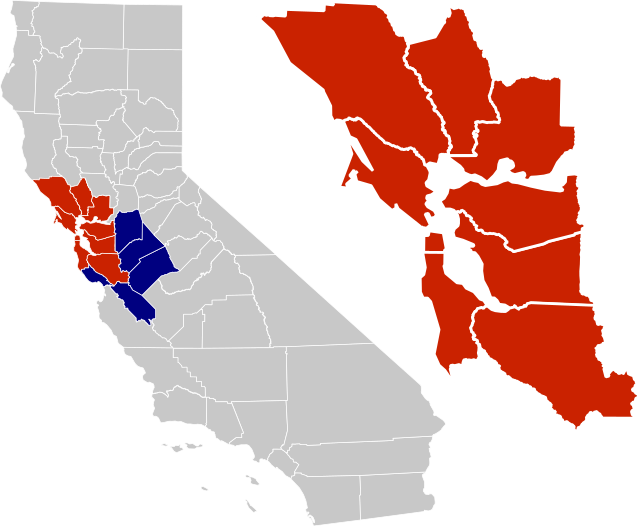
-
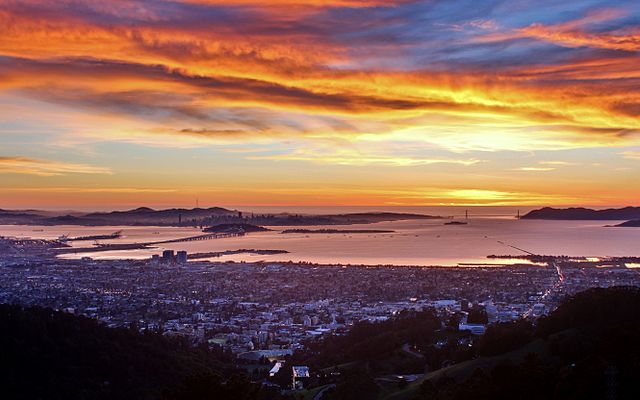
-

-

-

-
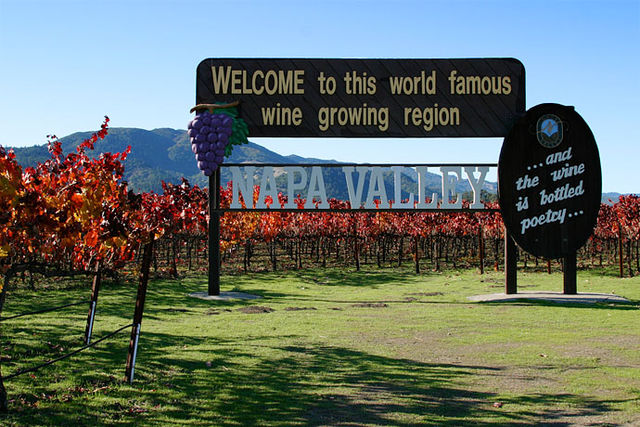
-

-
-

-

-

-
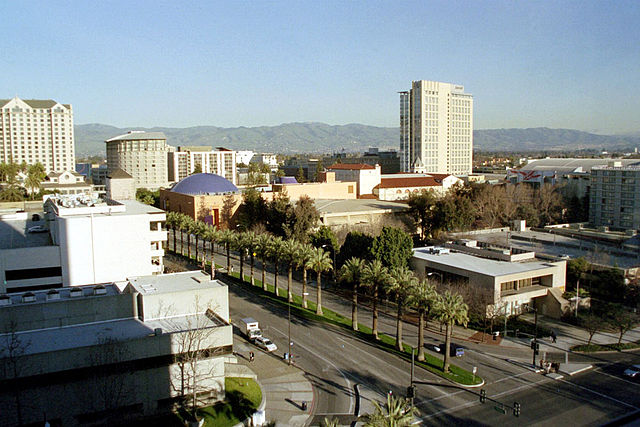
-

-
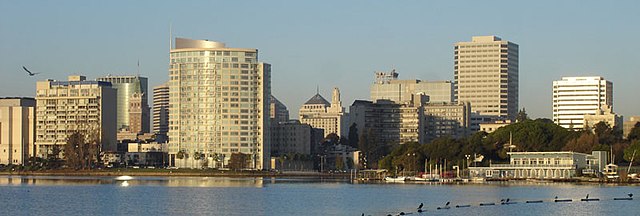
-

-

-
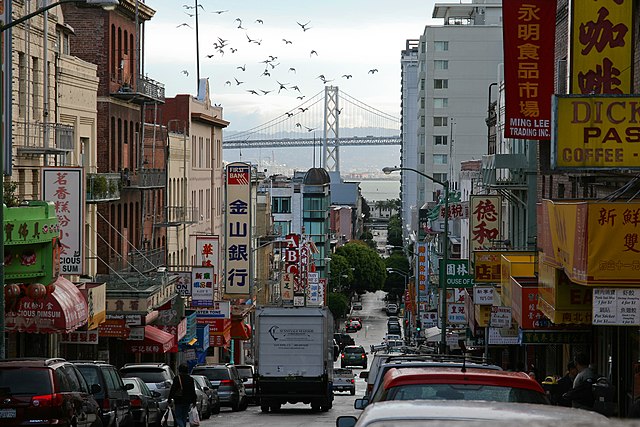
-

-
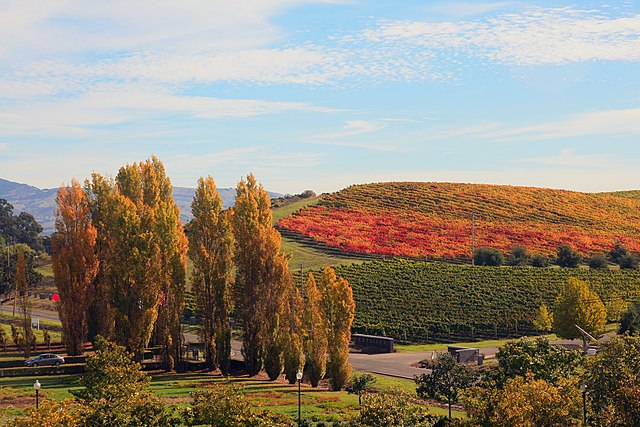
-
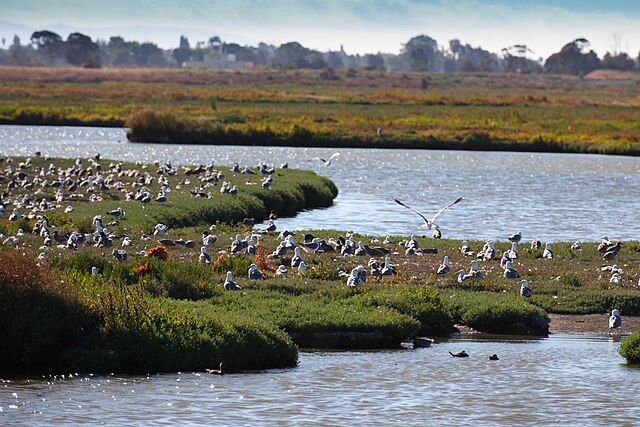
-

-

-
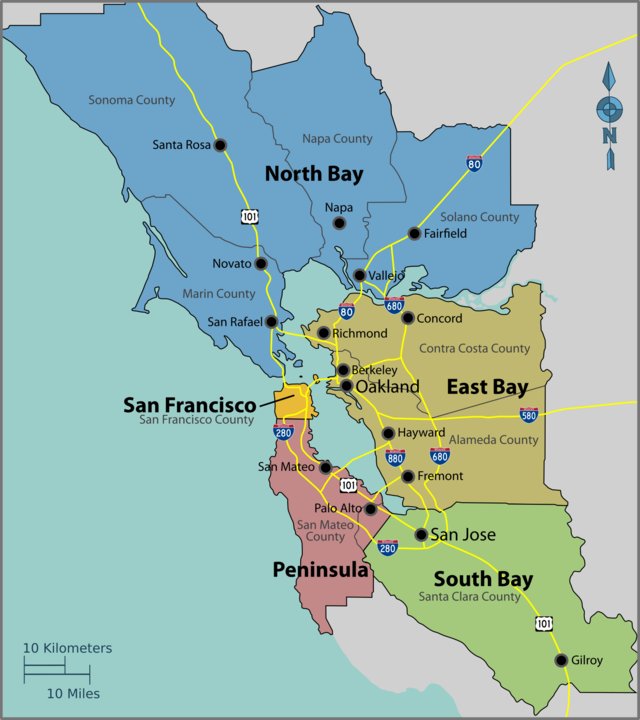 A map of the locally accepted nine-county definition of the Bay Area. Also displayed are the five subregions of the Bay Area, which are divided along county lines except for the northwestern portion of Santa Clara county.
A map of the locally accepted nine-county definition of the Bay Area. Also displayed are the five subregions of the Bay Area, which are divided along county lines except for the northwestern portion of Santa Clara county.
-
 An early sketch of the Ohlone people dancing in Mission San Jose. The Ohlone lived in the Bay Area when European colonizers first arrived in the region.
An early sketch of the Ohlone people dancing in Mission San Jose. The Ohlone lived in the Bay Area when European colonizers first arrived in the region.
-
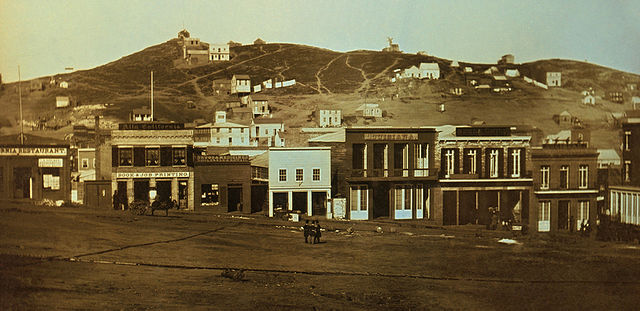 The Bay Area was briefly controlled by Mexico until John Berrien Montgomery captured San Francisco during the Mexican–American War and raised the American flag over Portsmouth Square.
The Bay Area was briefly controlled by Mexico until John Berrien Montgomery captured San Francisco during the Mexican–American War and raised the American flag over Portsmouth Square.
-
 Discovery of gold near Sutter's Mill transformed the Bay Area, which saw a flood of immigrants seeking wealth and hoping to strike it rich.
Discovery of gold near Sutter's Mill transformed the Bay Area, which saw a flood of immigrants seeking wealth and hoping to strike it rich.
-
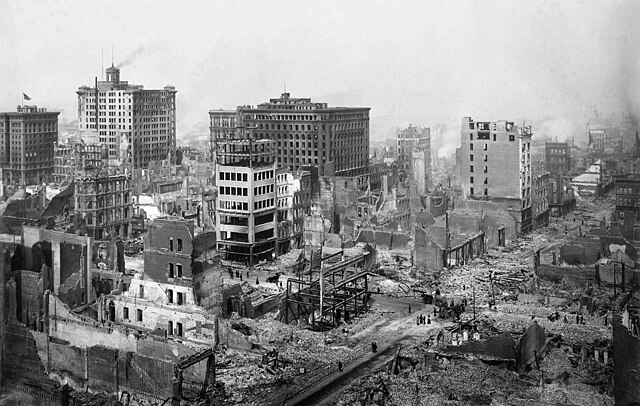 Damaged buildings in the aftermath of the 1906 San Francisco earthquake
Damaged buildings in the aftermath of the 1906 San Francisco earthquake
-
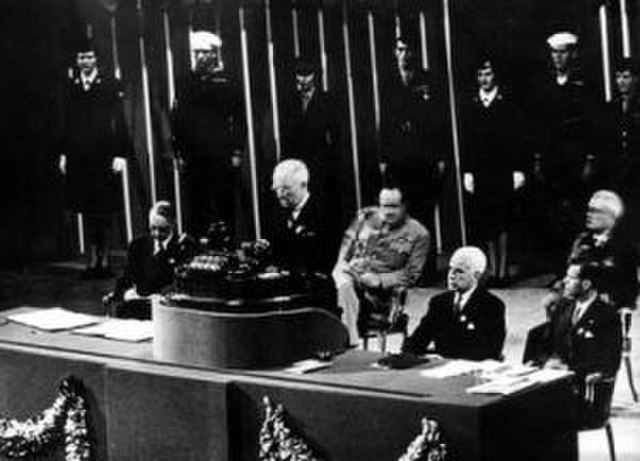 U.S. President Harry S. Truman addressing the United Nations Conference in San Francisco that established the United Nations.
U.S. President Harry S. Truman addressing the United Nations Conference in San Francisco that established the United Nations.
-
 Mounted policeman observe a protest march against the Vietnam War in San Francisco in 1967.
Mounted policeman observe a protest march against the Vietnam War in San Francisco in 1967.
-
 The NASDAQ Composite index from 1994 to 2005 shows the peak of the dot-com bubble in early 2000, before its collapse.
The NASDAQ Composite index from 1994 to 2005 shows the peak of the dot-com bubble in early 2000, before its collapse.
-
 The 2017 Women's March in Oakland. Other political rallies were held on the same day in numerous other locations throughout the Bay Area to spotlight progressive political causes and oppose the Presidency of Donald Trump.
The 2017 Women's March in Oakland. Other political rallies were held on the same day in numerous other locations throughout the Bay Area to spotlight progressive political causes and oppose the Presidency of Donald Trump.
-
 Pixar, whose animated films have won numerous Academy Awards, is based in Emeryville.
Pixar, whose animated films have won numerous Academy Awards, is based in Emeryville.
-
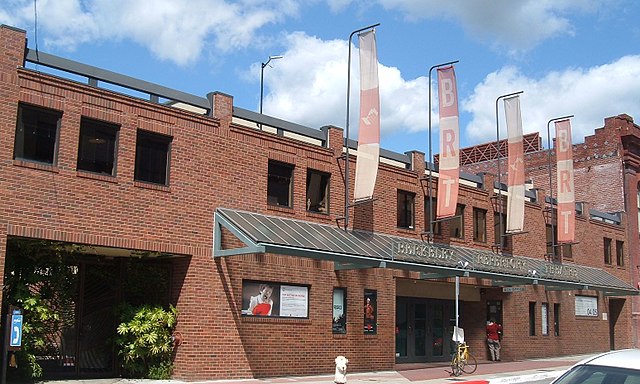 The Berkeley Repertory Theatre is one of the founding members of Theatre Bay Area and is based in a building (pictured above) in downtown Berkeley.
The Berkeley Repertory Theatre is one of the founding members of Theatre Bay Area and is based in a building (pictured above) in downtown Berkeley.
-
 The Old Chronicle Building, which housed the offices of the San Francisco Chronicle until 1924
The Old Chronicle Building, which housed the offices of the San Francisco Chronicle until 1924
-
 Oracle Park, home to the San Francisco Giants, is situated along the waterfront and has a view of the San Francisco Bay.
Oracle Park, home to the San Francisco Giants, is situated along the waterfront and has a view of the San Francisco Bay.
-
 A paceline of drafting cyclists ascending Mount Hamilton in Santa Clara county
A paceline of drafting cyclists ascending Mount Hamilton in Santa Clara county
-

-
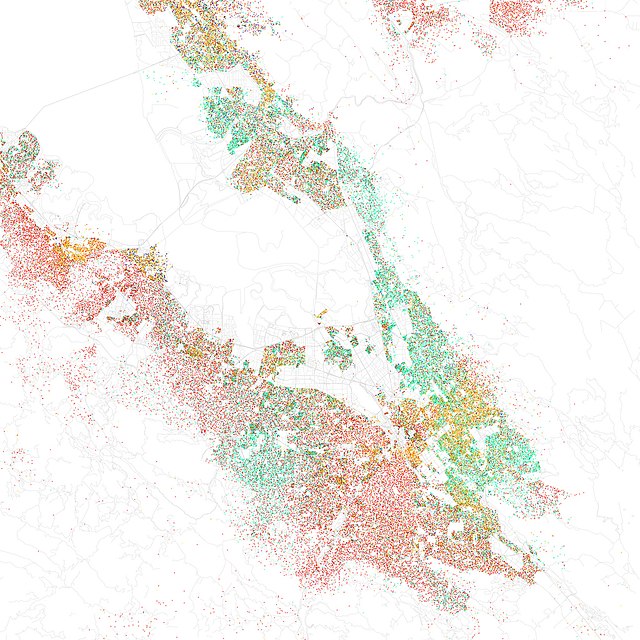
-
 Google, a multinational technology company and subsidiary of Alphabet Inc., is headquartered in the Bay Area city of Mountain View.
Google, a multinational technology company and subsidiary of Alphabet Inc., is headquartered in the Bay Area city of Mountain View.
-
 Dense Infrastructure in Downtown San Francisco
Dense Infrastructure in Downtown San Francisco
-
 The Memorial Glade of Sather Tower in the University of California, Berkeley campus. Berkeley is the highest-ranked public university in the United States, according to US News & World Report.
The Memorial Glade of Sather Tower in the University of California, Berkeley campus. Berkeley is the highest-ranked public university in the United States, according to US News & World Report.
-
 Aerial View of Stanford Campus, 2018
Aerial View of Stanford Campus, 2018
-
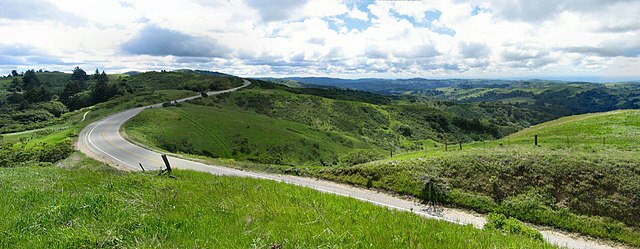
-

-
 River otter sunning on rocks in the Richmond Marina
River otter sunning on rocks in the Richmond Marina
-
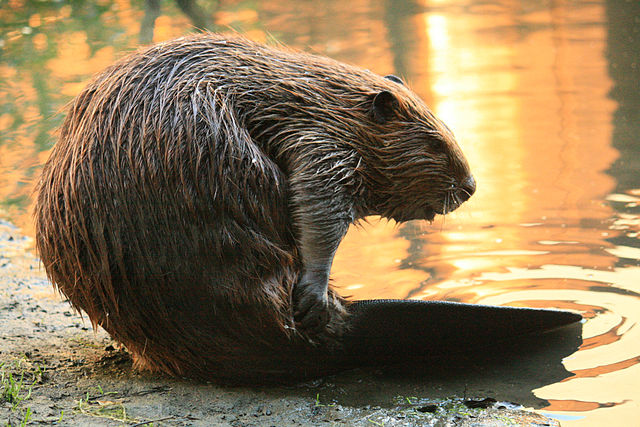 A California golden beaver in Alhambra Creek in Martinez
A California golden beaver in Alhambra Creek in Martinez
-
 A family of owls turned out of their homes in Antioch
A family of owls turned out of their homes in Antioch
-
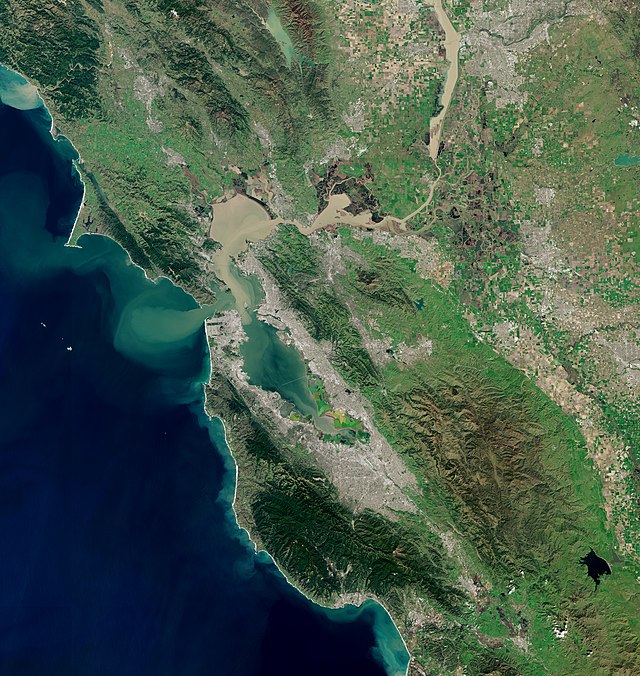 Satellite photo of the Bay Area taken in March 2019. The gray areas are signs of urbanization and represent the most populated areas.
Satellite photo of the Bay Area taken in March 2019. The gray areas are signs of urbanization and represent the most populated areas.
-
 A map displaying each of the seven major fault lines in the Bay Area and the probability of an M6.7 or higher earthquake occurring on each fault line between 2003 and 2032
A map displaying each of the seven major fault lines in the Bay Area and the probability of an M6.7 or higher earthquake occurring on each fault line between 2003 and 2032
-
 A map of the water features in the San Francisco Bay Area, including the bay and adjacent marshes, ponds, and tributaries
A map of the water features in the San Francisco Bay Area, including the bay and adjacent marshes, ponds, and tributaries
-
 NOAA Bathymetry Image of San Francisco Bay Area (2020)[267]
NOAA Bathymetry Image of San Francisco Bay Area (2020)[267]
-
 The consolidated city-county government of San Francisco manages its many responsibilities inside the San Francisco City Hall building. In addition to city and county governments, a variety of agencies and districts are also involved in the governance of the Bay Area.
The consolidated city-county government of San Francisco manages its many responsibilities inside the San Francisco City Hall building. In addition to city and county governments, a variety of agencies and districts are also involved in the governance of the Bay Area.
-
 The Bay Area is served by a variety of rail transit systems, with services provided by ACE, Amtrak, BART, Caltrain, Muni Metro, SMART, and VTA displayed here.
The Bay Area is served by a variety of rail transit systems, with services provided by ACE, Amtrak, BART, Caltrain, Muni Metro, SMART, and VTA displayed here.
-

-
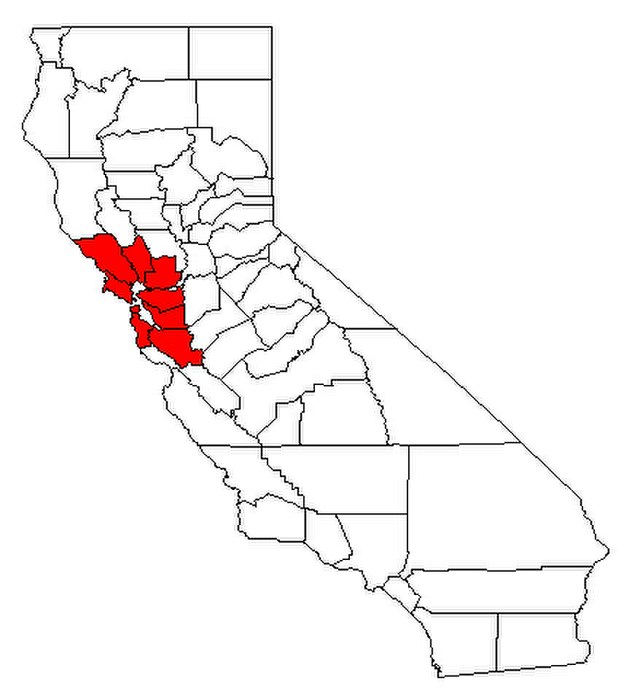
-

-

-

-

-

-

-
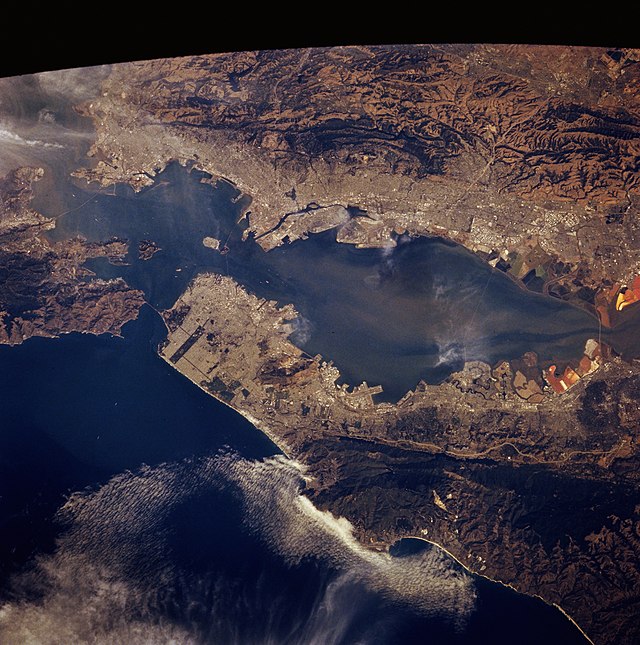
-

-

-

-
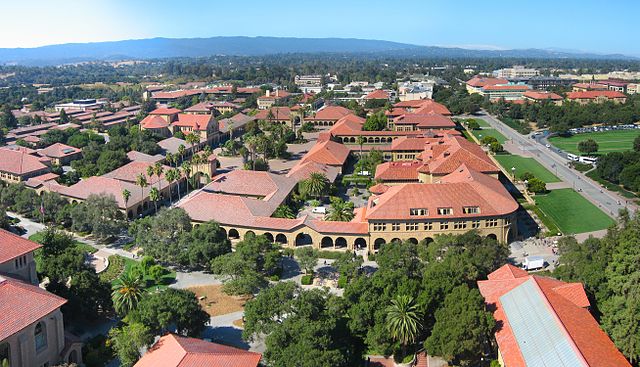
-
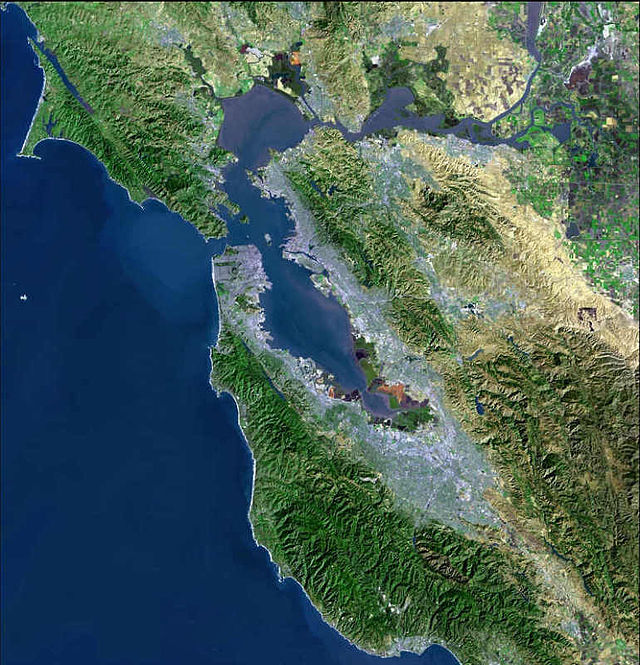
-
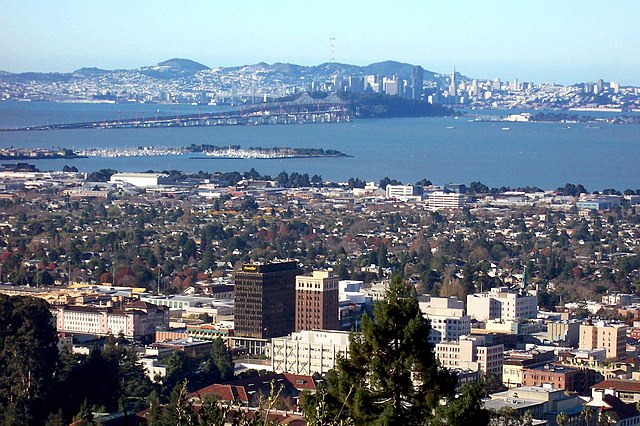
-

-

-

-
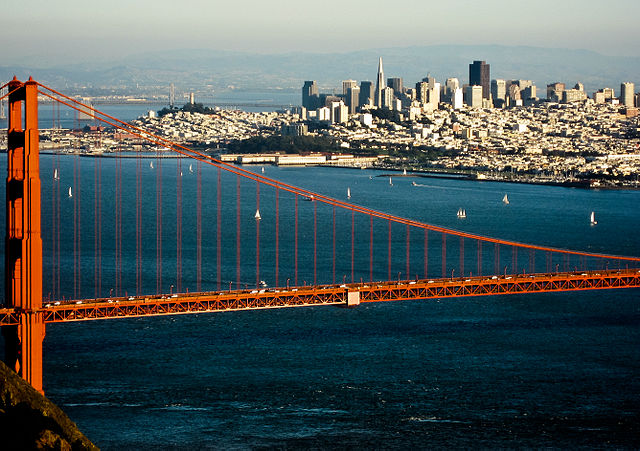
-
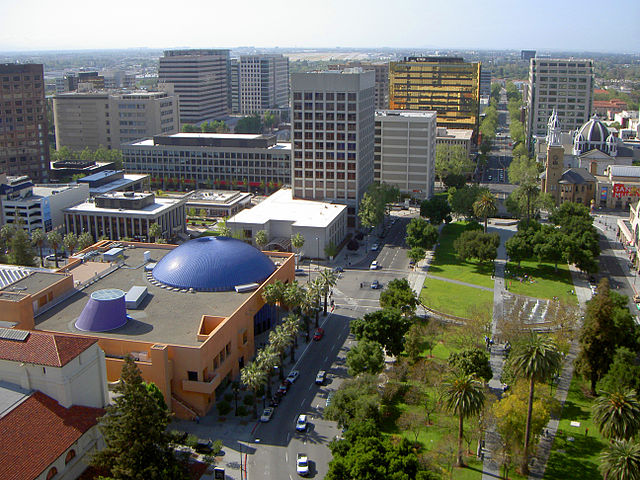
-
-

-

-
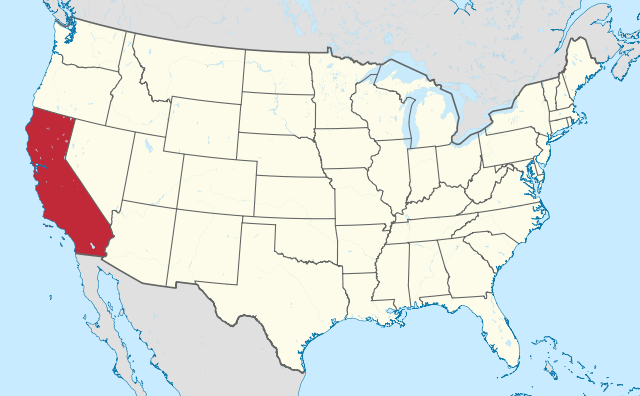
-
-
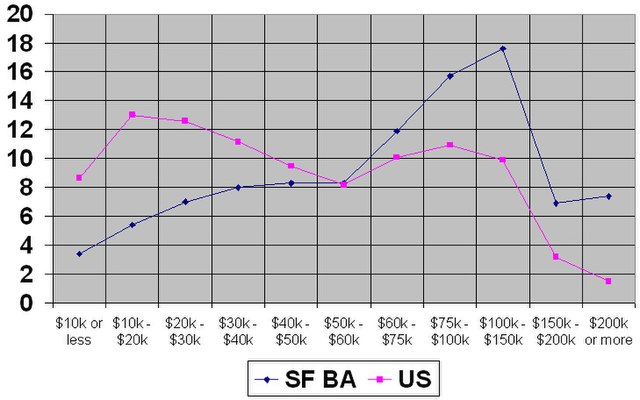
-
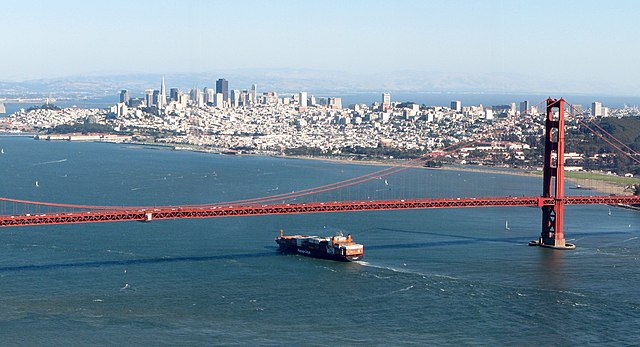
-

-

-
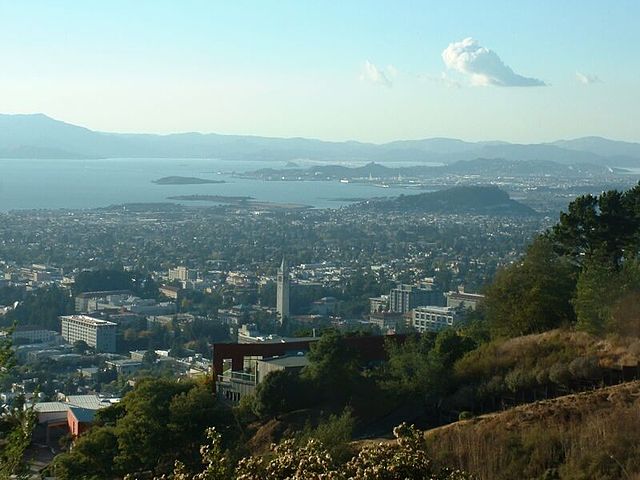
-

-

-

-

-

-

-
-
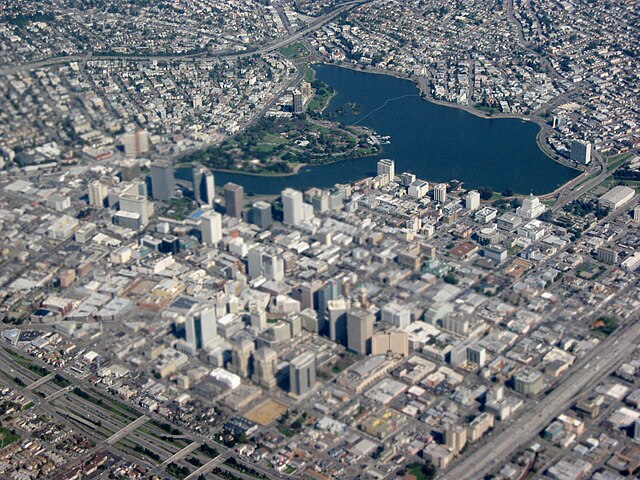
-
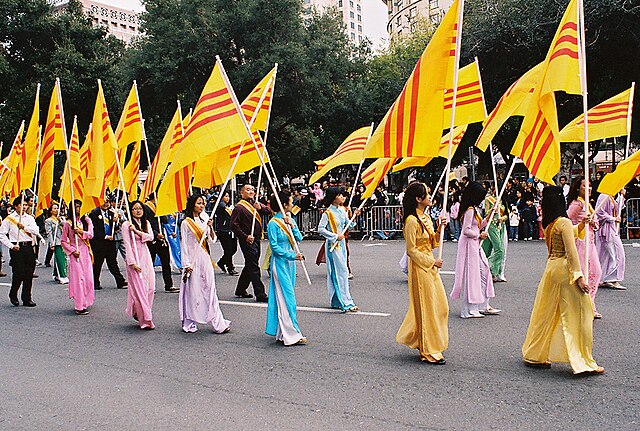
-

-

Comments
-
-
-
-
Celebrating my 49th birthday it was beautiful sunny day cold very windy the captain of the boat was extremely nice and all the people were friendly I didn't see any Wells dolphins etc my trip has ended for Cisco I'll be back with the kiddos this summer
3 months ago -
-
-
-






























































































